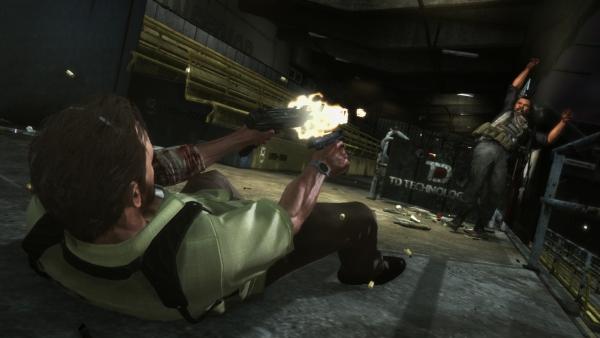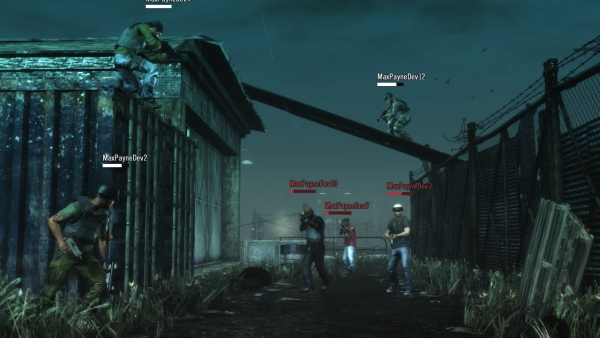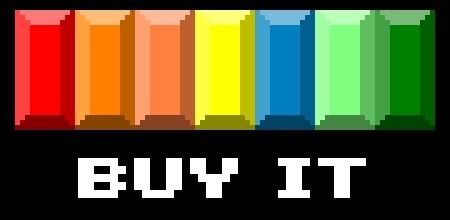
So here I am, reviewing Max Payne 3, and I wonder: was it worth it? Was playing this game worth the frustration, crashes, audio bugs, and insane loading times just to get to the main screen so that I could go through more loading times to get into the game? As I sit here with my head in my hands between sentences, I wonder: How did I get here?
Wavy Lines… Wavy Lines… Wavy Lines… Wavy Lines… Wavy Lines…
(You know, those lines that tell you we’re going back in time, because I thought it would be a good idea to model my review on the opening scene of the game I’m reviewing.)
Platforms: PC, PS3 (Version Played), Xbox 360
Publisher: Rockstar Games
Developer: Rockstar Studios
Genre: Angry, Drunk, Dangerous White Man Machine
Release Date: May 15, 2012 (PS3, Xbox 360), June 1, 2012 (PC)
ESRB Rating: Mature
When I saw that Rockstar was making Max Payne 3 my first thoughts were:
1. I don’t care.
2. I remember trying to play Max Payne and dying repeatedly on the dream sequence and never touching it again.
3. Oh wait, this looks pretty good, and it is Rockstar, so…OK, I’ll get excited.
And excited I was, and have been, as I’ve made my way through a prolonged story about a badly damaged man doing his best to shoot his way out of a drug and alcohol induced haze of guilt and mediocrity. Because, despite all of the problems I’ve had with Max Payne 3, I’ve also had an incredible amount of fun.
If you’re not familiar with Max, he’s an ex-cop whose wife and child were murdered in the first game by drug addicts. He’s made a lot of mistakes since then, and has been responsible for a lot of people dying. He’s a depressive middle aged alcoholic beset by the shame of all of his mistakes, drinking, and popping pills in northern New Jersey. Rockstar has taken over telling Max’s sad tale from Remedy Entertainment who put him in this lamentable state in the first two games in the series.
Max is pulled from this downward spiral by another ex-cop, Pasos, who is doing personal security for Brazilian elites who like to party. This is where we meet Max, doing bodyguard duty for the kind of people that they make reality television shows about so that the rest of us can have some fuel for our fantasy lives.
Now, if you’ve been paying attention, you’ll know that Max doesn’t have the best track record with keeping people safe. The game’s main story arc is all a result of that bad luck streak continuing throughout his tenure in private security that takes him through Sao Paulo, New Jersey, and Panama. And the complexities of familial, political, and psychological relationships make the story a twisting road of intrigue, insinuation, perceptions, and betrayal.

This adventure keeps up the traditional Max Payne gameplay, which involves shooting a ridiculously large number of human beings in their bodies with bullets until those bodies stop living. This is often done while slowing down time, using both “bullet time” and “shoot dodging” (the difference being that the first can happen in any situation, as long as you build up the meter, the second can happen at any time as long as you leap in a direction and land your aging body on the unforgiving floor after flying through the air). Added to these traditional Max mechanics, Rockstar has included cover based shooting, which keeps the older and more mortal Max alive. Because one of the basic truths of this game is that Max dies easily and often; sometimes basic truths can be incredibly annoying.
But while he’s alive, Max looks great, if a bit thicker than he used to. The formerly svelte figure is now built like a brick battering ram that sometimes shaves its head and wears Hawaiian shirts over some massive shoulders. And around the head and shoulders is a stunning world. The game looks amazing in both design and rendering with office spaces that actually look like real people have worked there, favelas which ring true with brilliant colors and desperation, and a sleazy strip/sex club that for once in a Rockstar game doesn’t feel like mere titillation.
It also sounds amazing, with incredible voice acting throughout. But then, this is where one of the major problems of the game appeared. On the PS3 version of the game I had numerous points where the dialog simply cut out. One sequence had all sound disappear completely until I reloaded. Another had the dialog out of sync by a good six or seven seconds. These bugs were not the rule, but they were frequent enough to put a damper on my experience.
As well, there is a sequence on the roof of a building that is coming apart. This was a hateful sequence which was both timed and horribly bugged. If I made it to the last enemy, died, and chose to reload, it would often simply crash to a black screen. If I was in cover before he came out, it would push me out of cover. Sometimes when I reloaded, I had no sound in this section. If not for the responsibilities of writing this review, these problems might have stopped me from finishing the game.
Another problem with the game is that it constantly switches your gun back to a pistol when you move from one minor encounter to another. It would seem fairly easy to remember that the player had the FAL equipped, and to go back to it, especially when many of the cutscenes are done in-engine and represent your current load-out. This may seem like a minor problem, but often you want to take out enemies very quickly when a scene starts, and if you’re holding the wrong gun, you can lose this opportunity.

The multiplayer seems like a very cool idea. And the twenty minutes or so I actually got to experience of it was a lot of fun. It covers the standard ground of offering customizable load-outs and unlockable skills. But unfortunately, constant connection issues kept kicking me out of games before they ever started. I made it into two, and the rest of the time was sent off by myself to an empty lobby. Those twenty minutes though? Exciting.
Probably the biggest problem for Max is that his game is overlong. Sequences seem drug out more than they need to be. The game seems so much as if it were ending, and then ending, and then ending again, that you feel like a hobbit is sure to appear around the next corner of your firefight.
These problems undermine a game that is otherwise thoroughly enjoyable. The inclusion of finding parts of golden guns, which when assembled appear in your game whenever you happen to pick up that particular weapon, environmental clues that illuminate the story a bit, and some holdovers from the original insanity that was Remedy’s version of Max Payne (i.e. Captain Baseball Bat Boy returns) all flesh out the experience. The rather blatant nods to movies like Man on Fire help to root the game in a more cinematic tradition which Rockstar is pulling from with prolonged cut-scenes and heavy voice-overs.
The play, the story, the beautifully rendered world, and the acting, are all expertly done and should be experienced. While this isn’t the traditional Rockstar game, and while this isn’t an original Rockstar IP, they’ve done very good work with the main elements of the game. Max Payne 3 should be checked out, but like one might imagine hanging out with Max himself, one should be aware of the risks first. But if you know what you’re getting into, powering through the bumps and bruises of the experience is totally worth it. Max might be a sad, lonely, guilt ridden, middle-aged man, but he delivers all the action of a summer blockbuster with a very fine story to boot.

Review Disclosure: A review copy of Max Payne 3 was provided by Rockstar Games for the purposes of this review.






